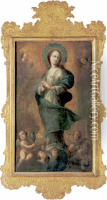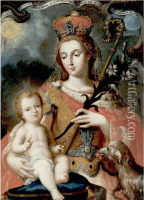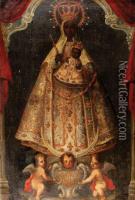Juan Pedro Lopez Paintings
Juan Pedro López was a Venezuelan artist, recognized for his significant contributions to the arts during the colonial period in Latin America. Born in 1724 in Caracas, then part of the Viceroyalty of New Granada, López lived during a period of cultural development in what is now Venezuela. He was a prominent figure within the local art scene, particularly known for his work as a sculptor and carver, as well as a painter, working primarily within the realm of religious art.
López received his initial training from his father, who was also a craftsman, and later refined his skills under the tutelage of other local artists. His style blended local and European influences, which was typical of the era. He was deeply influenced by the Baroque aesthetic, which was prevalent in the ecclesiastical art of Latin America during the 18th century. His works are characterized by their intricate detail, the dramatic interplay of light and shadow, and a certain dynamism that was common in Baroque art.
Throughout his career, López was commissioned to create numerous religious sculptures and paintings for churches and religious institutions, as well as for private patrons. He crafted altarpieces, pulpits, statues, and other ornamental pieces for churches, contributing to the rich visual culture of the period. His legacy is particularly tied to the Caracas Cathedral, where some of his works are still preserved.
Despite the prominence of his work, details about López's life are relatively scarce, and many of his works have been lost or remain unattributed. What is known is that he was a pivotal figure in the development of colonial art in Venezuela, and his influence extended to his students and subsequent generations of artists. Juan Pedro López died in 1787, leaving behind a body of work that continues to be studied and admired for its craftsmanship and contribution to the cultural heritage of Venezuela.


